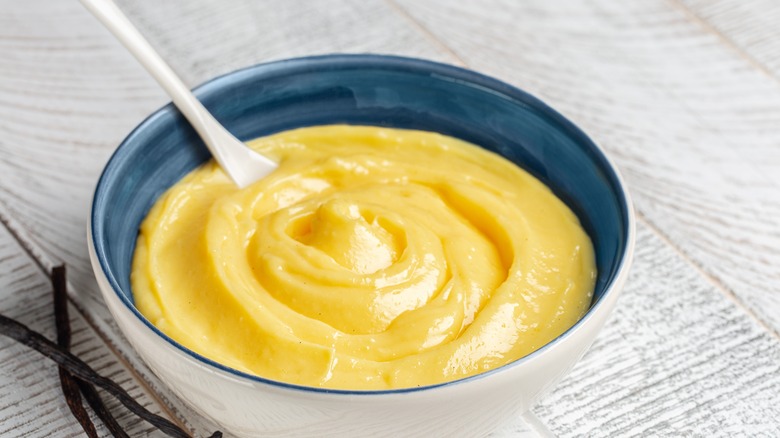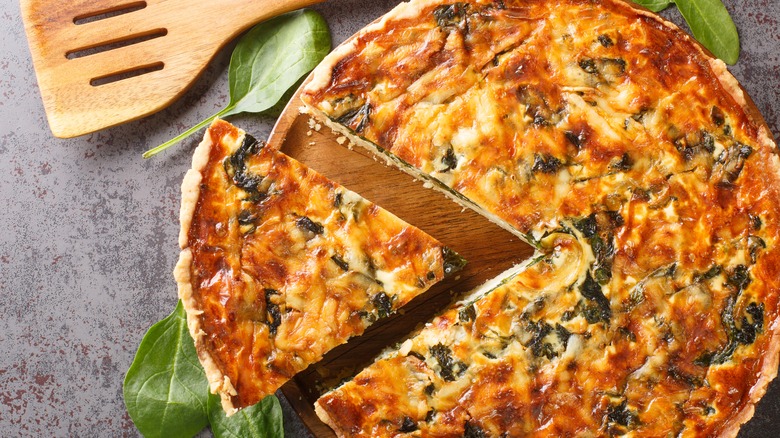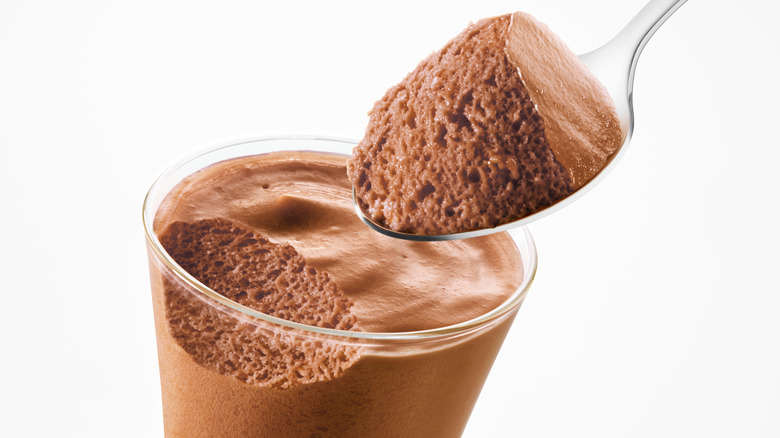Custard Vs. Mousse: What's The Difference?
If you've ever had a luscious, rich dessert like custard or mousse, then you know how satisfying it can be to enjoy bite after bite of these creamy treats. Whether you've enjoyed custard in a pie, on its own, or had sweet, creamy mousse as your final course, you've probably noticed some similarities as well differences between these two dishes. Custard is smooth and decadent, and according to Backyard Poultry, it gets its silky texture and thickness from the process of cooking milk, sugar, and eggs together. Whereas Food 52 reports that mousse can be a delightful surprise since it has a light, airy texture, but a rich, decadent taste.
Perhaps the beauty of both custard and mousse lies in the fact that both are made with just a few ingredients, yet they taste complex and rich, and they're satisfying dishes in their own right. Although they have a similar decadence, custard and mousse are different in their preparation, texture, and how they're served. Exploring the details and history behind each is almost as enjoyable as eating these two rich dishes.
Custard comes in many forms
British Food: A History details that the first custard recipe dates back to the 1500s, and although the ingredients include saffron, ginger, and a few other add-ins that differ from what we come to know of custard today, the dish sounds similar enough in texture and preparation style to be reminiscent of modern custard. Today, most custard recipes include a combination of milk, eggs, sugar, vanilla, and nutmeg, per Britannica.
Traditionally, the custard is served chilled, as noted by Crafty Baking, but it's prepared over heat, usually in one of two ways, on the stovetop or baked in the oven. Once it's done, it goes into the fridge to completely cool, which also allows it time to further set up. While you may think of custard as a sweet dessert, there are numerous types of custard, and you may be eating a lot more forms of a custard than you think without realizing it. According to The Spruce Eats, custard gets thickened through "the coagulation of egg proteins," which is a process that happens when the custard is slowly heated. The outlet further explains that custard isn't just the dessert you think of, since créme brûlée, cheesecake, and even frittatas and quiches are all considered a form of custard.
How mousse differs from custard
While custard relies on the whole egg, or just the yolks, for its decadent texture, mousse's creamy consistency comes from aeration. This aerating process happens when the mousse is made by whisking either heavy cream, egg whites, or sometimes both ingredients, into an airy concoction that's light, yet pillowy. When imagining mousse, many people may think of the chocolate variety, which is one of the most popular types, but as Delighted Cooking explains, mousse can be served in a number of ways, warm or chilled, sweet or savory.
When served as a dessert, mousse is made with a sweetener, typically sugar, and other flavorings such as cocoa powder, or an extract, such as mint, or a fruit-based syrup. Savory forms of mousse can be made by incorporating vegetables, and sometimes an additional thickening agent, like gelatin, as is the case in BBC Good Food's asparagus mousse. And not surprisingly, the Delighted Cooking article reports that mousse originates in France, and according to Greensboro News & Record, chocolate mousse originated in the 19th century in France by an artist named Henri Toulouse-Lautrec, a renowned painter as well as a cook. Now that you know the difference between custard and mousse as well as the versatility of each dish, be sure to savor these dishes the next time you eat them.


